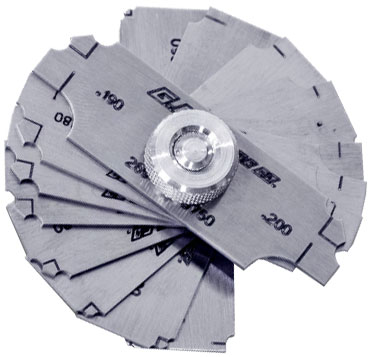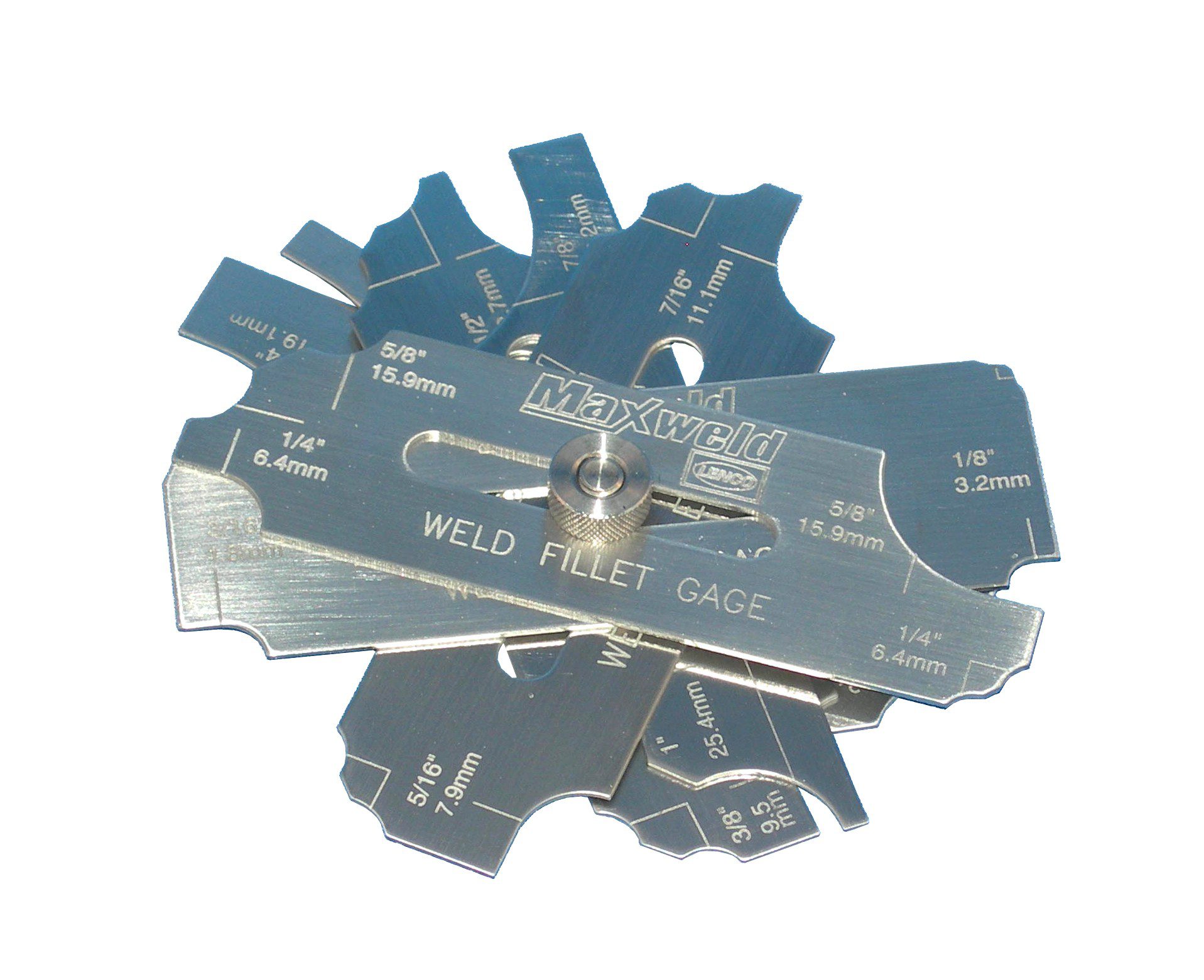Recognizing Gauge Fillet Weld: A Comprehensive Guide for Welders
Recognizing Gauge Fillet Weld: A Comprehensive Guide for Welders
Blog Article
Innovative Techniques to Fillet Weld Examination and Testing: Enhancing Weld High Quality and Compliance Criteria
In the realm of welding, the quality and stability of fillet welds play a crucial duty in making sure the architectural sturdiness and reliability of different commercial parts. With the consistent drive for boosted efficiency and conformity with rigid requirements, the expedition of innovative approaches to fillet weld examination and screening has become essential. As industries advance, the standard methods might no more suffice in fulfilling the demands of modern-day welding applications (Gauge Fillet Weld). By accepting advanced modern technologies and methods, a new perspective of possibilities emerges in the realm of weld top quality assessment and adherence to compliance requirements.
Advanced Non-Destructive Testing Methods
Utilizing state-of-the-art innovations, advanced non-destructive screening approaches play a crucial role in making certain the integrity and high quality of fillet welds. These methods, such as phased array ultrasonic screening (PAUT) and magnetic fragment testing (MPT), offer in-depth understandings into the weld's interior structure without causing any type of damages to the product. PAUT, for instance, utilizes several ultrasonic components to evaluate the weld from various angles, offering a detailed visualization of possible defects like lack of fusion or splits.
In A Similar Way, MPT is effective in spotting surface-breaking flaws by using a magnetic area and iron fragments to the weld location. This approach is particularly valuable for determining discontinuities that may jeopardize the weld's stamina. By utilizing these sophisticated non-destructive testing methods, weld examiners can precisely analyze the top quality of fillet welds, guaranteeing compliance with market standards and laws. The capability to detect defects at an early stage not only improves weld quality but also prevents pricey rework or failings in architectural stability, highlighting the importance of these cutting-edge screening techniques in welding assessments.
Robotics and Automation in Evaluation

The integration of robotics and automation has actually transformed the inspection procedure for fillet welds, enhancing performance and accuracy in top quality evaluation. Robotics offer exact control and repeatability in examining welds, ensuring regular and reputable outcomes. Automated systems can be configured to comply with particular examination courses, guaranteeing complete coverage of welds and lowering the danger of human error.
Robot inspection systems equipped with sophisticated sensors can detect and determine weld functions with high accuracy, providing detailed information for analysis. These systems can recognize defects such as splits, absence of fusion, and porosity, enabling timely rehabilitative actions to be taken. Furthermore, robotics and automation enable real-time data collection and analysis, giving instant responses to operators and helping with fast decision-making procedures.
Moreover, using robotics and automation in fillet weld assessment improves overall productivity by lowering examination times and increasing evaluation throughput. By enhancing the inspection procedure, makers can make certain weld top quality and conformity requirements are met successfully, inevitably bring about cost savings and improved item high quality.
Using Artificial Intelligence for Analysis
Artificial intelligence plays a critical duty in boosting the effectiveness and accuracy of evaluation in fillet weld examination processes. By using the power of AI, assessors can improve the evaluation of weld high quality and conformity criteria, causing much more specific and reliable results. AI formulas can rapidly refine vast quantities of information from weld inspections, identifying issues or disparities that may be testing to determine with the naked eye. This advanced modern technology enables real-time surveillance of weld high quality, allowing for immediate corrective activities to be taken if any kind of issues are spotted.
In addition, AI systems can gain from previous assessment data, consistently enhancing their ability to determine potential flaws and discrepancies in fillet welds. This flexible knowing capacity enhances the general quality control process, reducing the probability of human mistake and guaranteeing that welds fulfill the required criteria. By integrating synthetic knowledge into fillet weld evaluation, sectors can achieve greater levels of efficiency, uniformity, and conformity in their examination methods.
Portable Tools for On-Site Assessment
Enhancing field evaluation performance, the fostering of portable tools changes on-site assessment processes for fillet welds. These tools supply flexibility and benefit, enabling assessors to conduct extensive exams in various locations, including remote or difficult settings. Mobile devices such as ultrasonic screening devices, magnetic particle evaluation devices, and digital radiography systems supply real-time information and high-resolution imaging capacities, making it possible for fast decision-making and prompt responses on weld quality.
One significant advantage of portable devices is their capacity to simplify inspection treatments, reducing downtime and boosting total performance - Gauge Fillet Weld. Assessors can quickly deliver these devices to various task sites, eliminating the need for transferring heavy equipment or parts to off-site facilities. Additionally, the mobility of these tools advertises cost-effectiveness by reducing transportation expenditures and speeding up assessment timelines
Additionally, the use of mobile tools for on-site assessment advertises proactive quality control steps, as examiners can promptly identify and deal with any kind of prospective welding problems or discrepancies. By including these cutting-edge innovations into on-site inspection techniques, welding More hints experts can ensure conformity with market standards and boost weld high quality, ultimately bring about enhanced structural stability and safety and security in different welding applications.
Assimilation of Data Monitoring Systems

Having optimized on-site evaluation procedures through the use of mobile devices, the next stage involves the seamless combination of data monitoring systems to better enhance efficiency and information analysis capabilities in fillet weld examination and testing. By integrating data monitoring systems right into the assessment procedure, companies can streamline data collection, storage, and evaluation. This integration enables real-time surveillance of weld quality, instant identification of flaws, and punctual decision-making to correct any concerns that might develop during the examination procedure.
Data administration systems play a crucial duty in centralizing assessment information, helping with very easy accessibility for licensed personnel, and making certain information stability and safety. Via the assimilation of these systems, assessors can generate detailed reports, track historic information for pattern analysis, and boost overall procedure effectiveness. Additionally, the combination of data monitoring systems makes it possible for seamless communication between various stakeholders associated with the examination procedure, promoting collaboration and enhancing total quality assurance procedures. Inevitably, the combination of data monitoring systems serves to elevate the standards of fillet weld assessment and screening, guaranteeing conformity with market guidelines and enhancing weld top quality.
Final Thought
To conclude, ingenious approaches to fillet weld assessment and screening have dramatically enhanced weld high quality and conformity standards. Advanced non-destructive testing approaches, robotics, automation, artificial intelligence, mobile devices, and data administration systems have actually revolutionized the way weld assessments are conducted. By using these technologies, sectors can ensure that welds meet the called for quality requirements and guidelines, eventually improving overall efficiency and safety and security in welding processes.

Having actually enhanced on-site evaluation processes via the use of portable tools, the following phase involves the smooth combination of data monitoring systems to better improve efficiency and information evaluation abilities in fillet weld inspection and screening. Eventually, the integration of information administration systems serves to boost the requirements of fillet weld evaluation and screening, making sure compliance with sector policies and boosting weld high quality.

Report this page